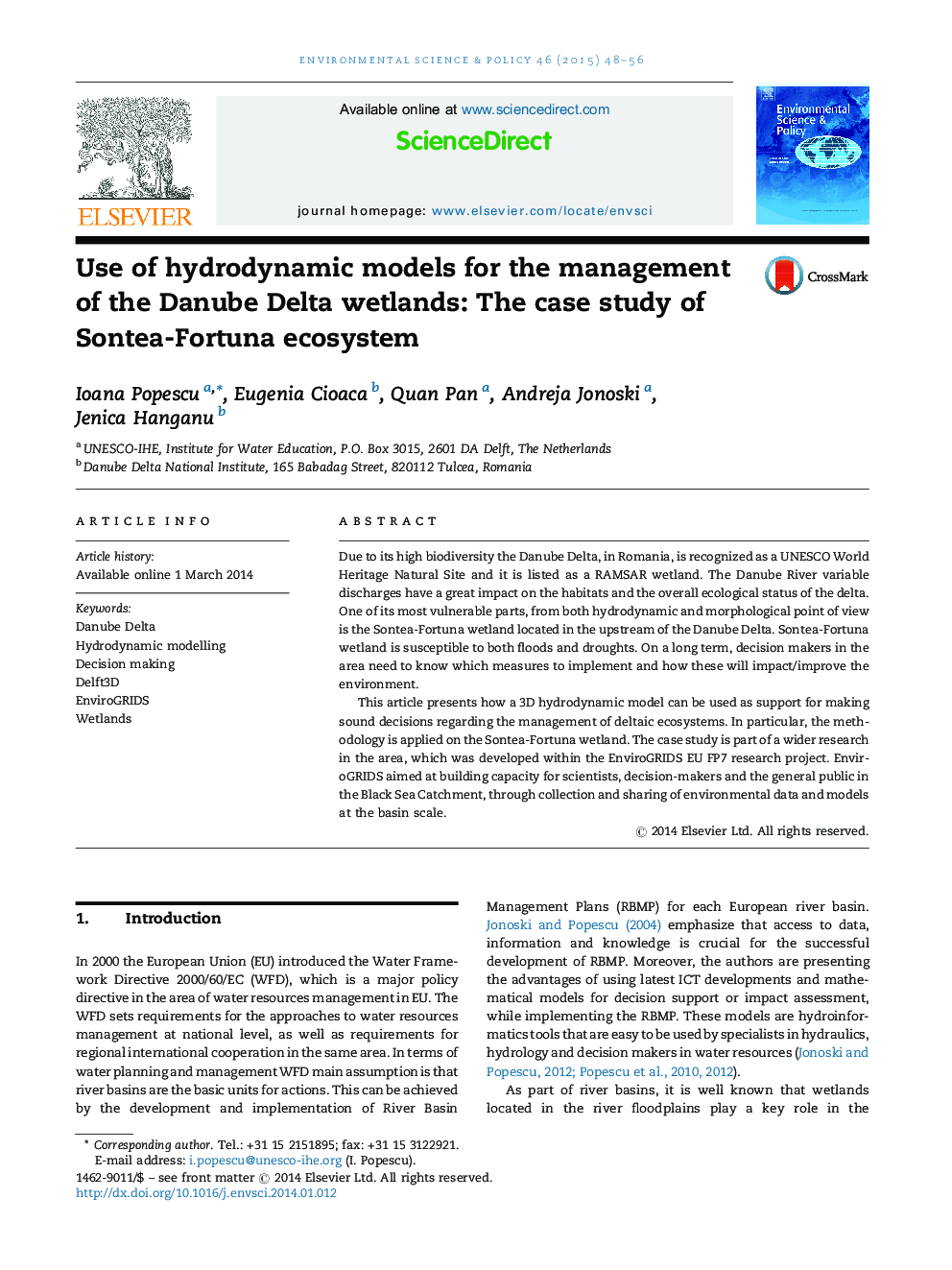| Article ID | Journal | Published Year | Pages | File Type |
|---|---|---|---|---|
| 1053506 | Environmental Science & Policy | 2015 | 9 Pages |
•Contribution to understand hydrodynamics of the Danube Delta wetlands.•Structured approach to combining quantitative and qualitative modelling of wetlands.•Hydrodynamic modelling in support of decision making and management in wetland areas.•Implementation of Water Framework Directive for the largest wetland in Europe.
Due to its high biodiversity the Danube Delta, in Romania, is recognized as a UNESCO World Heritage Natural Site and it is listed as a RAMSAR wetland. The Danube River variable discharges have a great impact on the habitats and the overall ecological status of the delta. One of its most vulnerable parts, from both hydrodynamic and morphological point of view is the Sontea-Fortuna wetland located in the upstream of the Danube Delta. Sontea-Fortuna wetland is susceptible to both floods and droughts. On a long term, decision makers in the area need to know which measures to implement and how these will impact/improve the environment.This article presents how a 3D hydrodynamic model can be used as support for making sound decisions regarding the management of deltaic ecosystems. In particular, the methodology is applied on the Sontea-Fortuna wetland. The case study is part of a wider research in the area, which was developed within the EnviroGRIDS EU FP7 research project. EnviroGRIDS aimed at building capacity for scientists, decision-makers and the general public in the Black Sea Catchment, through collection and sharing of environmental data and models at the basin scale.
